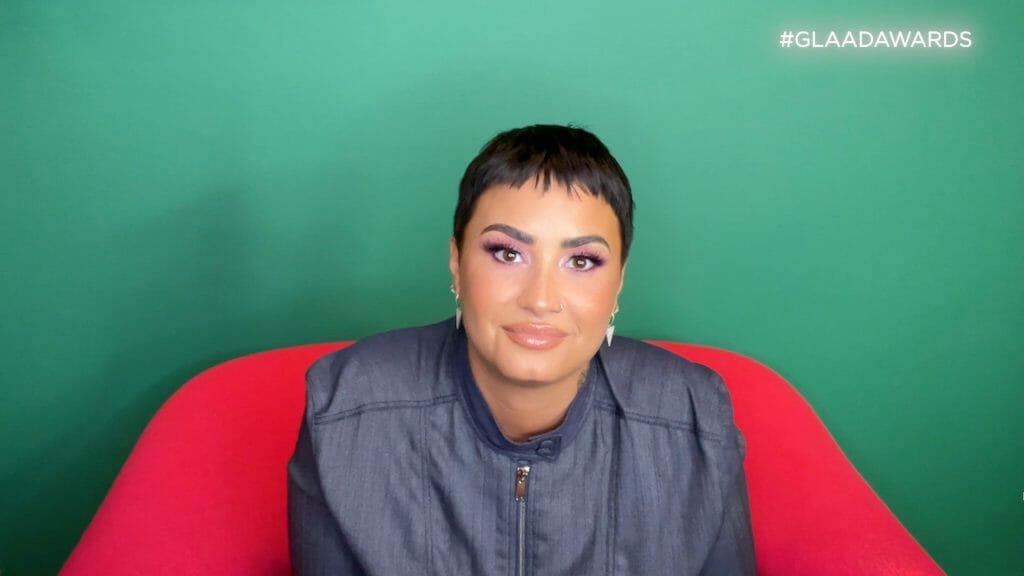This excerpt is from an essay published on NBC News Think, and can be read in full here.
On Wednesday, pop star Demi Lovato announced that they identify as nonbinary and are now using they/them pronouns. By joining a handful of celebrities who have come out as nonbinary over the past few years — from “Queer Eye’s” Jonathan Van Ness to “Pose” star Indya Moore — Lovato has helped throw a spotlight on a growing but often misunderstood community. As is sadly still typical, Lovato’s revelation was mocked by the usual trolls; Piers Morgan joked that he “identif(ies) as an annoying attention-seeking celebrity,” and Boston radio host Matt Siegal appeared to quit on air after being told not to mock Lovato (whom he called a “troubled woman,” adding “I’m against her binary thing.”)
In the most charitable reading, some of this criticism is born out of profound ignorance. “Nonbinary” is a term increasingly used by people who exist somewhere along the spectrum of gender, either between male and female or outside the binary altogether. Essentially, it’s shorthand for a complex, liminal, both/and relationship to gender that varies widely from person to person. Nonbinary is both a gender identity and a big middle finger aimed at the concept of gender itself.
As a fairly feminine-presenting nonbinary person, I’m familiar with the kind of misgendering and mockery aimed at Lovato this week. I get called “she” every day — and I admit that I often let it slide or gently remind people that my pronouns are they/them, because I don’t have the time or energy to explain the intricate inner workings of my gender identity.
Because nonbinary is a gender identity; what it’s not is mandatory androgyny, sex or sexual orientation. Some people identify as nonbinary and transgender, while others don’t claim the trans label. Some intersex people identify as nonbinary, but nonbinary people aren’t necessarily intersex. Importantly, nonbinary is separate from sexual orientation: You can be nonbinary and lesbian, nonbinary and pansexual, nonbinary and gay. If it seems complicated, well … good. Gender, sex and sexual orientation aren’t black and white, and that’s the point.
While the term “nonbinary” is on the newer side (the first court-approved gender change to nonbinary happened in 2016), there have always been ways to describe those who merge, meld or refute genders. The term “third sex,” for example, dates to the 19th century, and while it initially was a feeble attempt to define gay men and lesbians, it was later adopted as tongue-in-cheek by the ’90s queercore band Third Sex.
In Native American communities, the term “two-spirit” was coined by Indigenous activists to replace the offensive and outdated “berdache,” a name European colonizers gave to the queer and nonbinary people they encountered upon landing in North America. And in cultures around the world, there have long been words for people who didn’t conform to binary genders — the Siberian “koekchuch,” “hijra” in India or the five genders available to the Indonesian Bugis, people have always found a way to account for gender-nonconforming communities.
In the U.S., the growing community has made quick strides in terms of visibility and equality. Twenty states and Washington, D.C., offer driver’s licenses with an “X” marker in the sex field in addition to the traditional “F” or “M,” and some offer nonbinary birth certificates, as well. In January, the White House contact form was changed to let people enter pronouns (including they/them) and gender prefixes (including the neutral Mx., made famous by the performance artist and nonbinary icon Mx. Justin Vivian Bond.)
Just this week, a group of Democratic lawmakers sent a letter asking President Joe Biden to mandate the X marker option on passports. And it’s not just politics that’s changing; GLAAD’s annual “Where We Are on TV” report released in January showed that there are now two trans nonbinary recurring characters on prominent cable shows, with more on the way. There’s still room for growth (GLAAD counted zero nonbinary characters on broadcast and streaming shows), but for those of us who grew up not even seeing gay characters on TV, it feels like a lot.
Read the entire essay at NBC News Think here.













